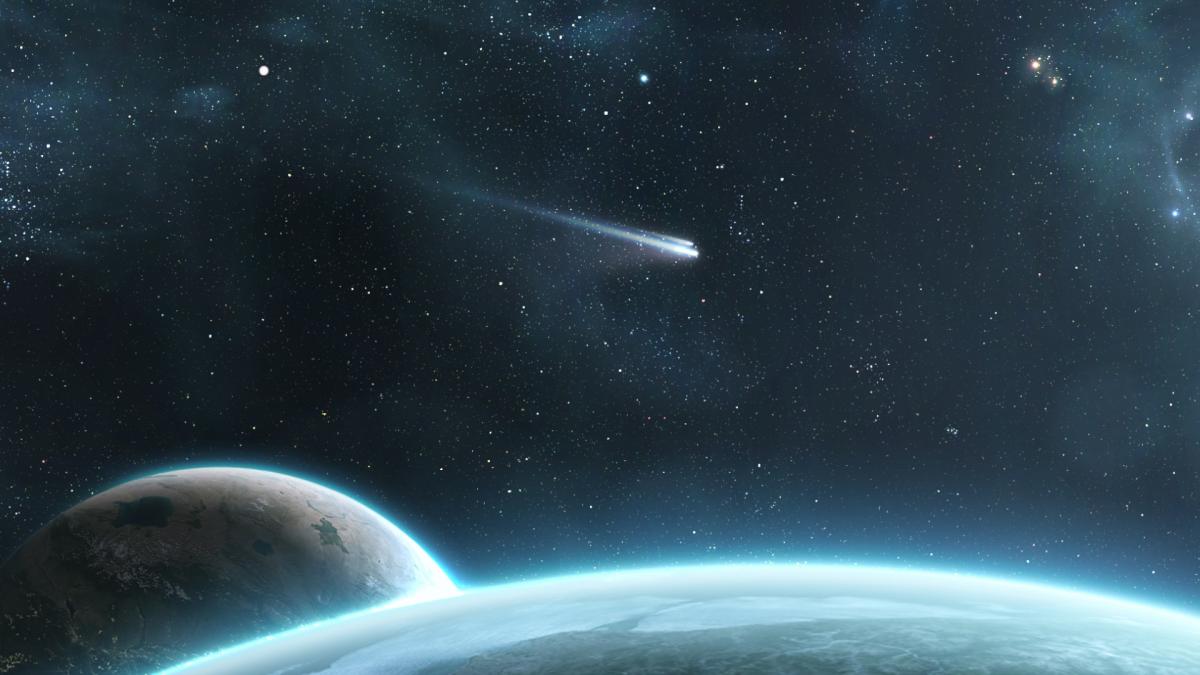Scientists suspect that comets may have delivered the organic ingredients necessary to cook up life on Earth, and new research shows how exoplanets could have received these special deliveries from comets, too.
In its early history, Earth was bombarded with impacts from asteroids, comets, and other cosmic bodies leftover from the formation of the solar system. Scientists still debate how the planet got its water and the molecules needed to form life, but comets are likely candidates.
But if comets could have potentially delivered the seeds of life to Earth, could they do the same for exoplanets elsewhere in the universe? With that question in mind, a team of researchers from University of Cambridge’s Institute of Astronomy developed mathematical models that helped them show how comets could theoretically deliver similar building blocks of life to other planets in the Milky Way galaxy.
While the research is far from conclusive evidence for life on other worlds, the team’s findings could help narrow down the search for life-hosting exoplanets.
“We’re learning more about the atmospheres of exoplanets all the time, so we wanted to see if there are planets where complex molecules could also be delivered by comets,” study author Richard Anslow from the University of Cambridge’s Institute of Astronomy said in a statement. “It’s possible that the molecules that led to life on Earth came from comets, so the same could be true for planets elsewhere in the galaxy.”
Related: Comet 67P has the building blocks of life — smells like mothballs and almonds
In the last few decades, scientists have been learning more about the so-called “prebiotic molecules” found within comets that could have led to life. For example, in 2009, samples retrieved from Comet Wild 2 during NASA’s Stardust mission were found to contain glycine, an amino acid and a building block of protein. The European Space Agency’s Rosetta mission also detected organic molecules in the atmosphere of Comet 67P/Churyumov-Gerasimenko between 2014 and 2016.
But these organic molecules might get destroyed during a high-speed, high-temperature impact with a planet. That means Anslow and his colleagues had to find scenarios where a comet crash in another solar system would be slow enough for these the ingredients for life to survive intact.
For solar systems with stars similar to the sun, the lowest velocity impacts would be most likely in where multiple planets are tightly packed together, the researchers found through their simulations. Scientists have dubbed these types of planetary systems “peas-in-a-pod systems.” A comet traveling from the outer reaches of such a system would get slowed down as it bounces between the orbits of these planets.
RELATED STORIES:
— See every comet photo (and more) from Europe’s Rosetta probe
— Comet Impacts May Have Jump-Started Life on Earth
— Life May Be Common in the Milky Way, Thanks to Comet Swapping
Meanwhile, the team’s simulations suggest there might be “unique challenges for life” on rocky planets surrounding red dwarf stars, officially known as M-dwarf stars. These are the most common stars in the galaxy and they have been a popular target for exoplanet-hunting astronomers.
But rocky planets in such a system also see more high-velocity impacts. A comet’s chance at seeding life there could be doomed, especially if the planets are more widely spaced.
“It’s exciting that we can start identifying the type of systems we can use to test different origin scenarios,” Anslow said in a statement. “It’s a different way to look at the great work that’s already been done on Earth. What molecular pathways led to the enormous variety of life we see around us? Are there other planets where the same pathways exist? It’s an exciting time, being able to combine advances in astronomy and chemistry to study some of the most fundamental questions of all.”
This research was published today in the journal Proceedings of the Royal Society A.


